(Note: If you’re just joining me in Part II, be sure to read Part I, which covers the first half of the tests)
As we left off in Part I, the tests thus far had been largely easy. By that I mean that the first test was a straight out and back, while the second test was a loop with some terrain and trees it had nothing that really tested GPS accuracy in satellite challenged environment or situation.
In those tests we found that the majority of the devices did quite well, with most of them being within one-half of one percent compared to the rolling tape-measure accuracy. As you remember, all the courses are measured using a rolling tape measure, and then each course is tested with three different methods: Walking, Running and Cycling.
But that’s where the easy stops, and the tough get going. In Part II we’ll explore forests which can degrade signal, as well as well a tight course that shows how well the devices can track continuous changes in direction with a very small margin of error.
Test 3: The Deep Tree Adventure
Perhaps the most talked about scenario for sport GPS is how they handle in the trees. Trees make very natural obstructions to GPS signal, and depending on the type of forestry being discussed – can be rather tall and dense. While I’ve yet to find a forest or jungle anywhere in the world where I couldn’t get a GPS signal successfully, I have – like many people – seen it have an impact on tracking. The secondary reason for this is that most forest trails aren’t straight and narrow affairs. Instead, they tend to wander. With switchbacks it’s rare to just be going on a single compass heading for extended periods of time.
Switchbacks in particular can also cause issues if the recording interval is set such that it doesn’t catch the turns being made. For example, if a data point is only recorded every 5 seconds, yet within that 5 seconds you complete an out and back switchback on a bike – it may appear you’ve only gone 5 feet, when in reality you’ve gone 25 feet.
There’s a pretty substantial wooded park not too far from my house, complete with some running trails that wander aimlessly through the forest. Here’s an overview of the route, which was one-way along a trail. I then went back to the start and did it over again.
Unfortunately, park rules dictate that you’re not allowed to bike on these trails, so the tests are only walking and running…though, I ran pretty fast to make up for it. 🙂 Though, I believe once you see the test results, you’ll see that cycling probably wouldn’t have made things dramatically different.
First up – was the walking test.
The course ended up being 2072 feet long, or 631.7m (.392 miles). Interestingly, this was pretty close to the little park sign that had the distance for the loop noted on it (which said .40 miles).
Then, I picked up the rolling wheel and went for a rather brisk run. I was moving fairly quick here – mostly in an effort to see the effect of higher paced twists and turns.
When I finished up my run, the first thing I thought was “Holy crap”. As in “Holy crap that’s a big difference in data points!”.
See, when I finished the walk I thought it was interesting that some of the data points were off a bit more than I expected. But, it wasn’t until I did it again while running that I was blown away by how poorly one device performed. It was clear that the results were dramatically different.
Check this out:
Yes…mind boggling.
Now, perhaps it’s time to put some numbers to what this means in miles – because I know meters can be a bit tough to conceptualize over a longer distance. The course was 2072ft, which as noted above was .392 miles. So the actual distance displayed on the devices were:
As a side note, that the Timex Global Trainer is the only device that actually displays distance to three digits beyond the decimal. Also, I was also happy to see that all the raw data points matched the actual device displays, as seen here with the TGT:
Of course, the obvious elephant in the room is how badly the Timex Global Trainer had performed. To some degree, I was expecting it to have different results than the Garmin’s – but not by the margin of error it had. If you remember back to my Timex Global Trainer In Depth Review I noticed some distance oddities of about 2%. This matched what many folks left in the comments as well – with the Timex Global Trainer shorting the distance by between 2.0% and 2.5% – almost so perfectly exact each time that many wondered if a technical bug was at play.
I talked with Timex previously about the distance, and they came back with the standard answer around being within acceptable GPS limits.
That said, I don’t believe that being off upwards of 17% should be considered ‘Acceptable’.
I went back to look at the recording interval – knowing that the Timex Global Trainer is set at every 2-seconds, and was curious to see with the Smart Recording on the Garmin’s, how often it was recording a data point. The answer? Less than I expected.
Check it out – the below snippet of the data stream was the point with the highest interval rate of the data points, compared to some time periods with even less data points. Yet, Smart Recording ended up being the most accurate compared to the 2s interval of the Timex. Time is displayed in the left column – seconds in the right digits of that column.
While we may be out of the woods from a tree standpoint, we aren’t yet out of the woods on testing – time to do one more test involving tight corners…this time, with relatively open surroundings.
Test 4: The Short Circuit Course
This last test was born out of my desire to understand the impact of tight 90* turns on GPS accuracy. We often hear of GPS units ‘cutting the corner’ from a distance measuring aspect. So – I set up a short course around two parking lot chunks. This short loop had two 90+* corners, and one ~150* sweeping turn. You can see the course in it’s entirety in the below picture with the red line:
(Funny side note, there’s a guy there in that blue car, an older gentleman. He just sat there the entire time as I walked/ran/biked 12 times around him. I’m fairly certain he thought I was staking him out or something.)
Of course, to put a bit of context to the route, here it is from space – I thought it was interesting that the Google Earth map is just slightly offset by about 4-5 feet:
Now, with a course like this being as tight and short as it was, I needed to ensure that I was walking/running/cycling the exact same route each time, so I actually chalked the ‘race line’.
The course was designed so that I’d also be able to bike it with some speed as well, so they couldn’t be perfect 90* angles, thus I built in a route to ensure I could make the turn quickly.
Finally, in order to see the net effect after a bit of time more than just one short loop, each ‘set’ actually consisted of four laps. So the walk test was four laps, the run test four laps, and the bike test four laps.
With that, off to walk it I went. Once completed, I had my total of 1,369.5 feet – or 417.5 meters:
From there I ran it…and then finally, I biked it. I was actually rather proud of how accurate I was able to hit the chalk lines on the bike in the corners.
Especially given I had that big ole rolling measuring wheel strapped onto my handlebars.
Once I was all set, I reset all the data points and got them all sorted out. Here’s the results:
Like the previous test, we continue to see the same trend with respect to which devices are performing well, and which ones are having trouble with turns.
I was actually fairly surprised to see some of the devices as accurate as they were. For example – check out the the 310XT on both the run and bike. That thing is virtually spot on, despite the crazy corners. And, in the walk-test the Edge 800 is within .1 meters – or basically a few inches of being correct. That’s the distance alone between it and the little rolling wheel on a stick. Meaning, it may indeed be exactly correct. Pretty amazing.
Given this test had virtually no tree cover, it appears that satellite lock isn’t really the issue for the TGT. Instead, it appears it’s really a software problem with either how it interrupts the data, it’s polling cycle, or it’s recording interval.
Summary of Results:
The tests results in some 44 different test files to analyze, which I’ve made available here for those that are interested in the raw files…or just need filler files for a different project. Note that the raw files are still processed by the unit itself – they just aren’t processed by any additional software. All of the distances noted throughout both posts match what the unit said on the display screen.
I was curious though – if you averaged out all the tests, how does each device perform, as well as each device by sport?
As you can see above – in general the devices were within about 1.5% in the case of the Garmin’s, with the Timex Global Trainer having it’s average brought down by the twisty/turning tests. In the straight/normal tests, the Timex Global Trainer generally was within 1-2% of the actual distance.
We see that the Garmin 310XT and the Edge 800 are remarkably close – less than .06% apart. I also found it interesting that in general, the devices in some cases actually did BETTER at speed than while walking. Note how the 310XT does better in the cycling category than the walking or running. Same with the Edge 500. Though, at the end of the day, the Garmin 310XT takes the cake for the most accurate device.
I tried to be as complete and accurate with my tests as possible. As always though, with unlimited time and ‘budget’, I could devise a test matrix that covered every conceivable test length, distance and type. But I also wanted to be realistic. I structured tests in much the same manner as my bikes/runs – going where I please on terrain that we all train with.
We don’t walk/run/bike in a perfect test lab – and thus, these devices shouldn’t either. They should be able to perform accurately every time you use them – and in the case of most of these devices, that’s certainly showing to be the case. As a general rule, in normal situations it appears the devices are coming out within about 1% of the real distance.
It would be interesting to do a similar test each year and see how GPS accuracy improves over time as new devices come out, or firmware is updated for older devices.
GPS Signal Tips, Tricks and Notes:
There are ways you can either directly or indirectly improve your devices GPS accuracy, and most of them are quite simple and easy.
1) Wait for the signal to get fully acquired
When you first power on your GPS device, it’ll typically go through a satellite location process. This is simply the device finding its best satellite buds and getting to know them. On older devices (pre-Forerunner 305), this used to take a heck of along time. On the FR305, this was improved to usually less than a minute. On the newest class of devices with the Hotfix technology, this is typically on the order of 10-20 seconds assuming you haven’t dramatically changed locations.
With the newer devices (FR310XT/110/210, Edge 500/800, etc…), the devices essentially remember which satellites you last talked to, and aim to find those same satellites again. By remembering where they were in the sky, they can quickly find them and then get you running in short order.
If however, you don’t wait for the satellites to get fully acquired, then your accuracy is less than stellar…which I’ll talk about in the next item.
2) Look at the current accuracy
Did you know that on your Garmin you can see the current satellite accuracy? While the unit says “Acquiring Satellites” simply hit the up button to see the satellite page. The page will look like the below:
This page tells you a few things. First off, it lets you know which satellites its connected to, and the strength is of each of those satellites. Those are black bars you see.
Next, it tells you the current accuracy of your unit. Meaning – exactly how far off the mark could your location be? Typically the Garmin units need to be within 40-50ft before it’ll consider it ‘locked’. If it shows 300+ft for example, that means that it could identify you as being almost a football field away. This would have a direct impact on the distance of your activity, as well as speed and other items.
You may remember my In Depth Post on the Openwater Swim Mode, where I talk a bit more to how accuracy acquisition affects results.
3) Not getting correct mileage? Try a soft reset.
I get a few e-mails a month from folks who see wildly inaccuracy distances – especially compared to friends running with GPS units. For example, I’ll hear of someone running a 10-mile run with a group, and their unit will read 8.5 miles (that’s way off!). In virtually all these cases a soft reset will resolve the issue. A soft reset is kinda like rebooting your computer. It doesn’t delete any profile or history data (a hard reset would), it simply resets a few things and most importantly – resets the satellite history. Once you reset this satellite memory, the problem almost always resolves itself.
4) Update the firmware
You may remember my older post on the importance of updating firmware. While many firmware fixes are addressing bugs or adding new features, there are certainly numerous instances where satellite acquisition and accuracy is being updated via firmware updates. For example, there was a firmware update a while back that fixed a few issues with satellite accuracy on the Forerunner 310XT in certain situations.
In the case of the Timex Global Trainer, the September 2010 firmware resolved virtually all of the major satellite acquisition issues that the first firmware had – so that’s a biggie for TGT users. Note that it doesn’t appeared to have resolved distance accuracy however, as the unit used users is on the September 2010 firmware.
Useful Related Posts
If you found this post interesting, then you’ll probably find some of these related posts right up your alley – all part of the larger How-To section:
– Racing the Line: Understanding how courses are measured
– Understanding GPS Sport Device Elevation
– Garmin Openwater Swim Mode (Talks to satellite acquisition & accuracy in water)
– Importance of updating firmware
Thanks for reading!
FOUND THIS POST USEFUL? SUPPORT THE SITE!
Hopefully, you found this post useful. The website is really a labor of love, so please consider becoming a DC RAINMAKER Supporter. This gets you an ad-free experience, and access to our (mostly) bi-monthly behind-the-scenes video series of “Shed Talkin’”.
Support DCRainMaker - Shop on Amazon
Otherwise, perhaps consider using the below link if shopping on Amazon. As an Amazon Associate, I earn from qualifying purchases. It doesn’t cost you anything extra, but your purchases help support this website a lot. It could simply be buying toilet paper, or this pizza oven we use and love.

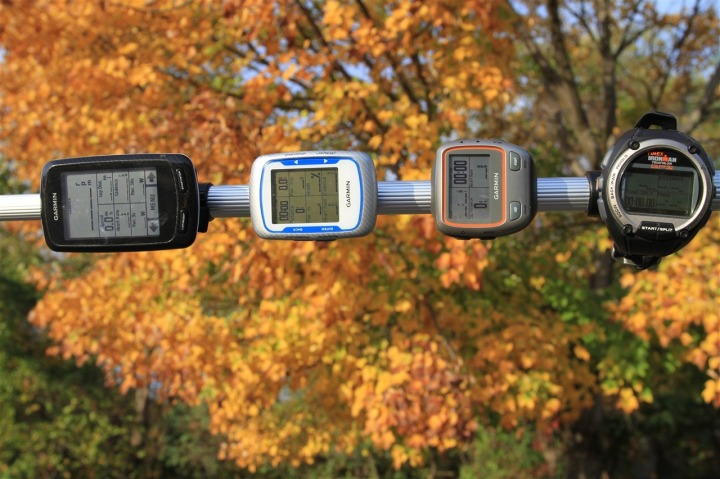
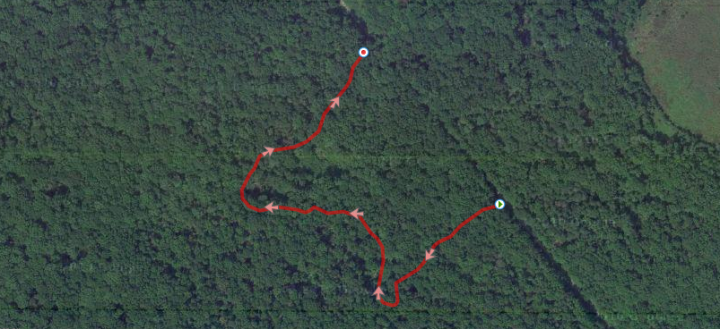
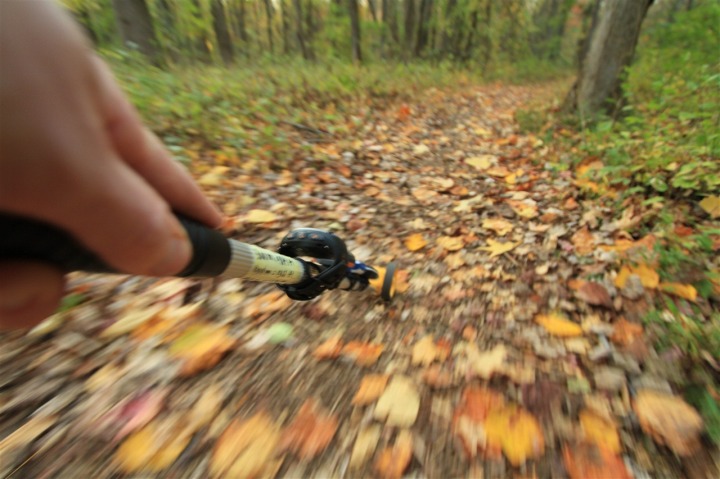

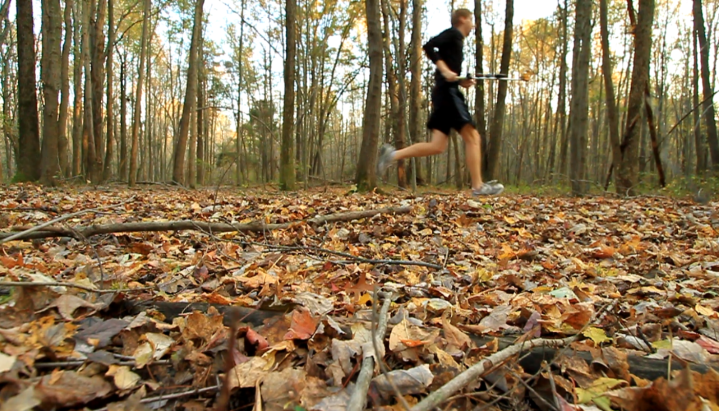


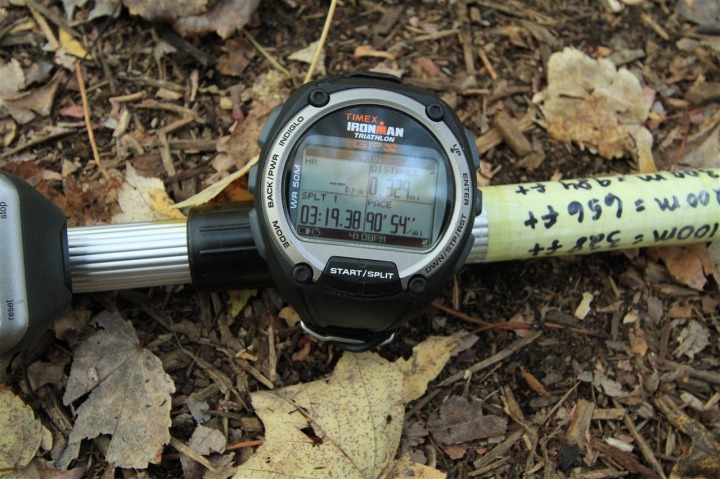
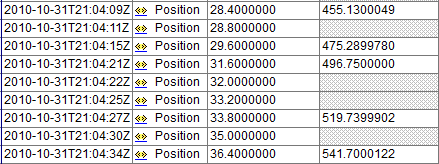
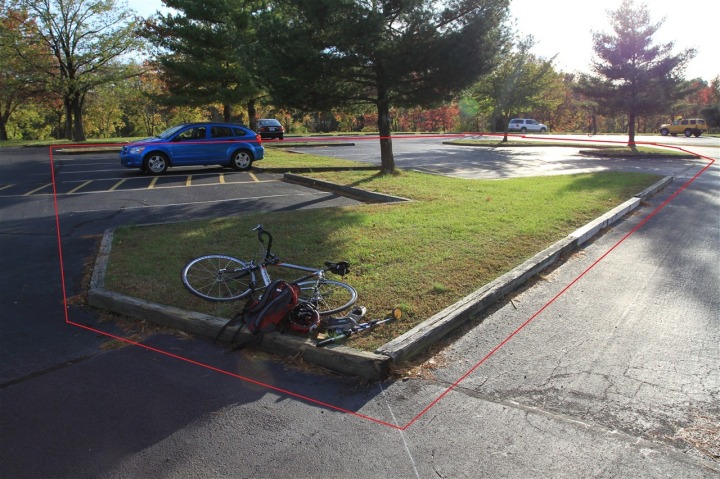
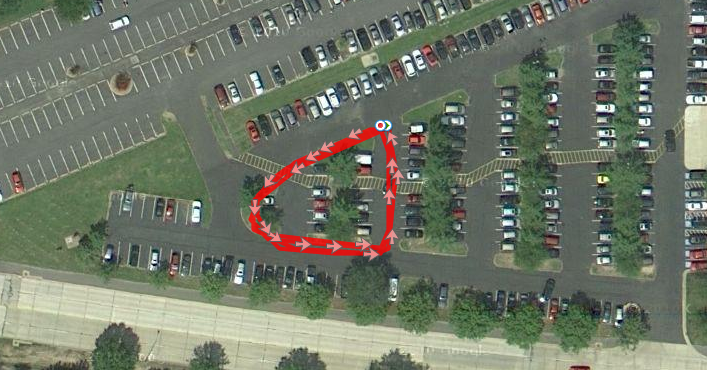
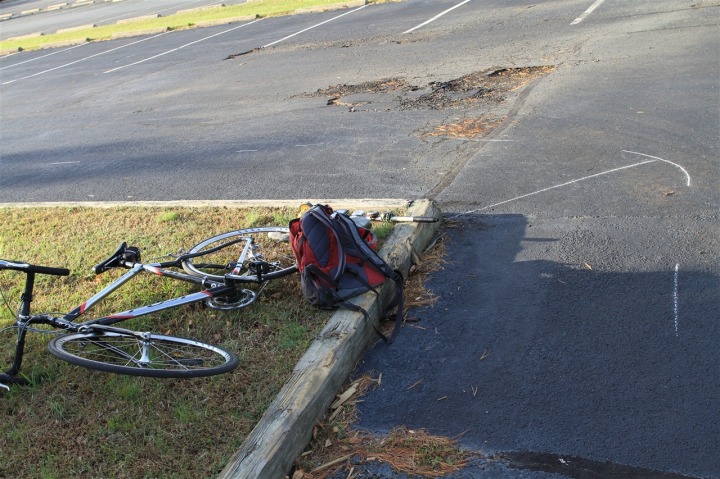
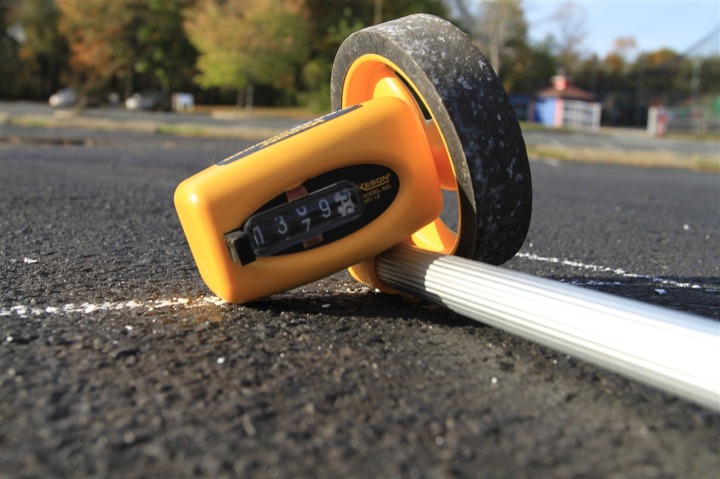
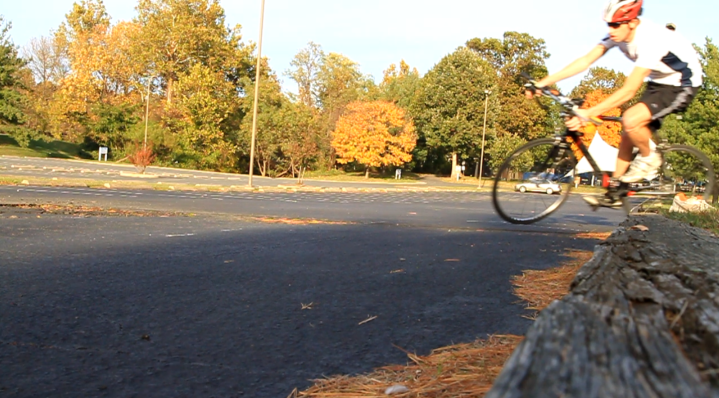
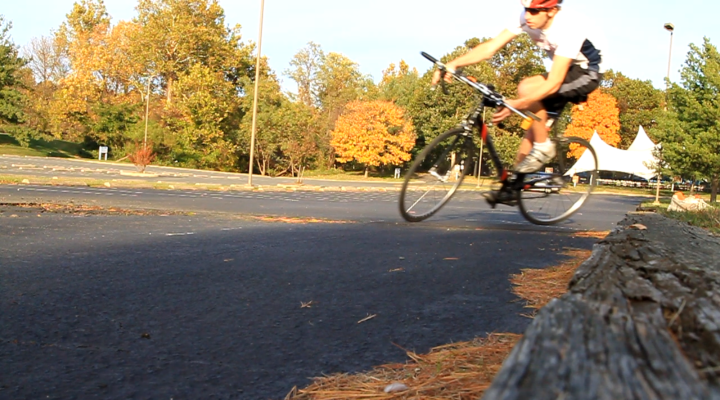


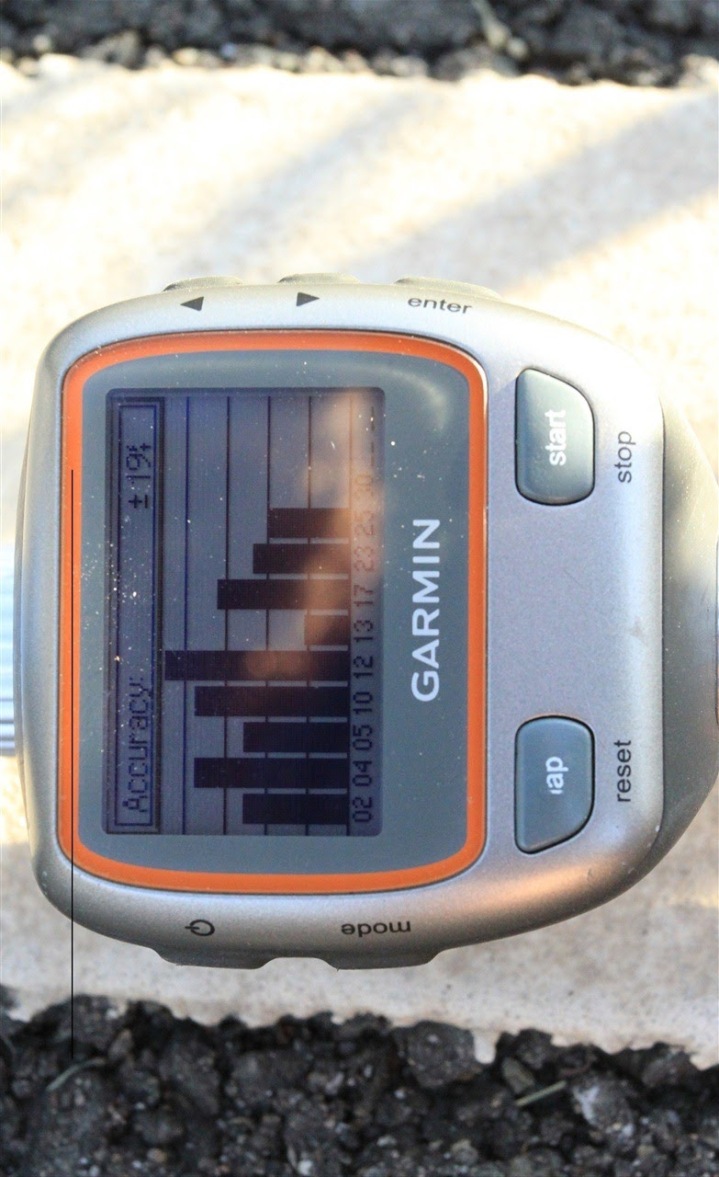




















So now that the TGT has been declared flawed what can you expect from Timex. I mean if they have their guys training with these devices they must know of these issues, right? I want to get a nice set up and was excited about the TGT but knowing that the XT is going to perform better I am a bit upset. Hope you get a quick response from Timex regarding this issue.
Great work done….once again.
Great review (still trying to figure out when you have time to do all this). Now that a thorough comparison between GPS units is done it would be interesting to see how GPS compares to footpod technology (both Garmin and Polar).
Great read – thanks.
rob
Is this without a powermeter? It would be interesting to see how using a powermeter (and forcing the 500/800 to 1sec recording affects the results.
Another questions. With all of the memory that the 500 has, I don’t understand why they don’t just default to 1sec recording.
Another great post! I second BobH’s question about how 1s recording will effect the results of the Garmin units.
Looks like Garmin’s head start (~10 years?) in watch-based GPS has given them a very tangible advantage so far. I’m sure the guys over at Timex, while not stoked about the results, are working hard to get it right.
Very cool stuff Ray!!
I also am with those who request a Garmin trial with one second recording turned on.
Love the post! Puts thing into perspective.. I am considering a GPS watch and currently have the FR60.. I wonder how the FR60 compares to GPS??
Great post! Did you also log HR during the trials? If so, were they any different?
Such an awesome post. Thanks.
Hi
AFAIK the distance on the garmin units is always calculated by 1 second recording, the only differences to smart recording is on how many data points get saved to a file. In effect smart recording vs 1 sec rec. only affects the gps track you can view later on OR if you calculate the distance from the gps track (in eg. SportTracks). Maybe you want to have another look into that.
Based on Ray’s review of the FR60, it compares very favorably to GPS distances when properly calibrated.
Just ordered at TGT via Amazon.com and was pretty excited, having read, re-read and re-re-read your reviews. This is concerning…will only be using the TGT for running as I have an Edge 500 w/PT on my bike, but the results with tree cover and twisties/tight turns are ridiculously bad. Will there be any kind of firmware fix or should I return the TGT when it arrives, holding out for version 2 or the next 310XT this spring?
Outstanding work as always, Ray. I have a FR305 but had considered the TGT for the waterproofness and form factor – hopefully the Timex folks will get to work on the issue.
re: the guy in the car – I wondered about the looks you must get sometimes while testing… maybe a future post?
link to georgiatriathlete.blogspot.com
Thanks for the work you put in to compile this in-depth and interesting report.
Thanks for putting this together. I am pretty disspointed with the results of the TGT. I purchased this unit back in the summer. Nothing but frustrations with the unit.
I’ve actually run a half marathon WITHOUT aquiring a satellite signal. I talked to the project manager at the NY marathon on the weekend, said a few more firmware updates were coming before next summer…but i’m not getting my hopes up.
Isn’t there a strong possibility that a Timex Global Trainer firmware update will not improve its accuracy? If I recall correctly it does use the same gps chipset as the 310xt (SiRFstarIII).
Thanks for that very interesting test.
Too bad you didn’t do the same with garmin’s pods (2 versions )
another post to come ?
Great post. For your next I’d love to see how elevation throw the units off.
I bought the TGT after reading your reviews over and over again like “H” said, and I was psyched when I got it. I still train with it daily, and this experiment doesnt bother me too much since I dont do alot of deep tree running haha.
I think the Global Trainer wins in looks haha and it actually has a watch function, I love that about it!
Hopefully there will be some firmware updates in the future to fix this though! I’m a bit worried on how long some of my runs/bikes have been.
BTW Ray, thanks for your reviews! It helped me choose the TGT (wanted the 310xt but didnt have the cash, and I need waterproofness too otherwise I’d have bought the 305) And I really enjoy reading your blog!
Great post and very helpful review, thanks Ray. I am glad to see I picked a winner this time
Also glad that the polar HR strap worked out for you
Cheers
Tim
Great post.
Thanks for the depth and excellent experimental design. What’s your opinion on using an iPhone app like Runmeter vs the dedicated GPS watch? I’d like to get a Garmin, but I can’t help but think that the phone apps will catch up pretty quickly to the accuracy and quality of these watches? Any thoughts?
Great comparison review, but I thought you’ve pushed your analysis further and made your own processing of the raw data files (by-passing the OEM software and firmware that may be at fault here).
Keep the hard work
RE: Timex Global Trainer firmware update potential
Lots of questions on this. I know that Timex is in general working on firmware updates to the current Global Trainer, though I don’t know if that includes accuracy fixes.
As to whether or not a firmware fix could address the issues – I’m fairly confident it could. Keep in mind the unit is able to track well in certain situations – and further, has the exact same GPS chip as the other units tested. To me it seems there’s an issue with respect to how often it’s polling and/or recording updates.
RE: GPS vs Footpod technology
In my FR60 review, I did a bit of comparison between the FR60 and 310XT using the latest generation footpods. In general I was blown away by how accurate it was, especially on highly complex interval runs (even in the snow!). In one case they were virtually identical after a nearly 10-mile interval run.
RE: Power Meter & 1s technology
All these tests were without power meters, and thus using either smart recording (Garmin) or 2s recording (Timex)
RE: 1s recording questions
Remember, the FR305 is the last Forerunner unit to still support the ability to switch into 1s recording without a power meter. The newer units (FR310XT and Edge 500/800) require a power meter attached and active to do 1s recording.
RE: HR Trials
I did not log HR data for these tests, as I didn’t want to complicate things further. It’s something I’m looking at for the future.
RE: Longer question
“AFAIK the distance on the garmin units is always calculated by 1 second recording, the only differences to smart recording is on how many data points get saved to a file. In effect smart recording vs 1 sec rec. only affects the gps track you can view later on OR if you calculate the distance from the gps track (in eg. SportTracks). Maybe you want to have another look into that.”
If you crack open a file, the unit records position points at every interval (on Smart Recording, which is greater than 1s), however only records distance lengths every ‘once in a while’. The sum total of those distance lengths however represent the Track Total, which is listed once per lap, and then again as a summary for the activity. These all match.
Only in the FR310XT swimming mode are these data points ‘ignored’ and a final track total ‘faked’ by the unit. I confirmed this with the engineering team back in June.
RE: Raw Files
Just to ensure we’re all on the same page – these are still final raw files from the units. The units have completed all processing on them at this point, they just lack additional processing by any computer based software – such as Garmin Training center or Garmin Connect. Meaning, they are the same data distances and lengths that you’d see on the unit itself.
The primary reason I used the data files over the distances displayed in tools like Garmin Training Center/Garmin Connect is simply because I could get exact meters – in other words, a higher level of precision instead of just .98 miles.
RE: iPhone/Similiar vs Dedicated GPS unit accuracy
This is something I’m planning to put together at some point when I compare iPhone apps. Similiar test set to this, though likely just in the trees and an out and back.
Thanks all for the feedback and for reading!
In my experience, the shorter the distance, the greater the margin for error. My guess is that the software has some sort of smoothing algorithm to tweak the tangents into straighter lines, but I’m entirely speculating!
Once again, Ray, a very thorough review. How do you find the time?
Thanks.
Great Job DC. Your reviews continue to be awesome
It would be great to see all the garmin cycling products compared.
This has been my experience, the 310xt is impressively accurate. It tends to give me much better results than my Edge705 while mountain biking winding tree covered routes.
You talk about the recording interval possibly impacting the accuracy. My understanding from looking at raw data files is that the recorded distance for each data point is different than if you just drew a straight line between GPS coordinates. Garmin uses many more data samples for computing the distance of a segment than just the end points.
Very interesting on TGT. Maybe we should stop complaining about some of the annoying issues with Garmin products.
My experience with the foot pods has been that you can get amazingly accurate results when properly calibrated but only for shorter runs. Inevitably, with both Polar and Garmin, running a route where I had exact mile markers, after 10 to 13 miles, the accuracy would drift by up to 3% from the first few miles. On the older foot pods, the accuracy tended to be more impacted by changes in speed or stride rate.
Hi Ray,
Your blog rocks!
I wish you have conducted the accuracy tests earlier. Having read your in depth review about TGT. I found it suits my need, so I bought my 1st GPS watch on your link at Amazon & it’s TGT. Guess I will have to make do with less accuracy using TGT 🙂 & thank you.
Best regards
csakt4
As always, very interesting. But where do you find the time to do all these tests ? Are there days of 25 houres in the US ?
Ray – brilliant effort and your work is appreciated by a nation of runners, cyclists and swimmers alike!
I have recently noticed that when you create a route a workout from a data download to Training Peaks, you have the ability to ‘refresh’ and get more accurate(?) readings.
A recent ride came up with a distance of 19.48miles (1:11:19 including stops at lights) from the TGT download in Training Peaks on the ‘Bests/Laps’ view under the ‘Map & Graph’ tab yet the ‘Reports’ tab shows 20.52miles and 1:11:22. The saved route once ‘refreshed’ was 20.64miles. The elevation was also refreshed.
I suppose my question is which is right?
Like everyone else, I hope the TGT firmware update eradicates these inaccuracies.
I’ll say that I’m happy with the performance of the TGT. I’m no cartographer or treasure hunter so 95-98% accurate is just fine. It is still worlds ahead of what we used to do (drive the distance and look at the trip to see how far it is). I appreciate the analysis but I think some people are reading a little too far into this. If we applied even half the precision to the rest of our training regimen as we expect of our watches, we would all be in such good shape that it would not matter. If I get to the point where I am measuring my quick oats on a food scale I will begin to worry about 1/100ths of a mile on a workout. Lastly, the TGT w/HR is $250 on Amazon. The 310xt is $400. $150 is alot to pay for a 2% accuracy improvement.
Cheers
Ray, A great review as usual. Plenty of useful ‘real world’ information there for us to digest and apply.
Are you allowed to log these as training miles?
Tim, read this again (taken from the report above),
“That said, I don’t believe that being off upwards of 17% should be considered ‘Acceptable’”.
Vastly different from your ‘1/100th of a mile’ quote, (which I can’t find in the report, I’ll look again).
In today’s market, the accuracy of a device I’m spending 100’s of $’s on is crucial (a lot of other folks here seem to think so as well!).
There’s a reason the TGT is on amazon for $250. Your comments sound like a veiled marketing defence of the aforementioned product.
All the best with your reckless intake of quick-oats, (go for steel-ground next time).
Hi, and thanks for these reviews. I recently got a Garmin 310XT and have been enjoying it, except that for the last few times I’ve run it has taken–no joke–20-30 minutes to find a satellite signal. (One run was in the suburbs of Chicago, the other along the lake in Chicago, neither near major downtown buildings, both times with very clear skies.) This post mentions a soft reset/reboot as a way to reset the GPS, which I’m thinking I need–except it doesn’t tell me how to actually do that. And yes, I looked through the manual and didn’t see anything. Would you mind pointing me to an instruction page or giving me a few pointers? Thanks so much, both for the very informative site in general and for the very specifically useful reviews.
jen
Which firmware was on FR 310xt?
Hi Ray, i been using TGT > a month & agreed with you it is not accurate. My activity can be seen at: link to runkeeper.com where i wore TGT & used RK/Iphone to tracked.
Hope Timex come out with something to improve it’s performance.
I can see that the table comparing the short track (417m) have two accuracies that are the same 97,717% (Forerunner 310xt and Edge 800). IS there a mistake? Cos 310 distance is not that good afterall
Also would like to ask what would you recommend for a soccer referee for measuring distance, GPS device or a foodpod? – Lots of direction changes involved, running, walking, sprinting all involved
Hi Anon-
RE: Firmware
The 310XT at that time was on 2.90.
Hi Anon-
RE: Chart error
Sorry, minor Excel percentage calculation – fixed that – all good now. Only shifted it about 1%.
Thanks all!
Hi I’m Paolo from Italy.
First of all: compliment for the site! It’s very very very well done!
Next: my question. I’m ready to buy a GPS sport watch and I like the TIMEX IRONMAN GPS. But I’m very scared for this precision test. Do you know if there is a firmware update that resolves this problem? Thanks a lot. Bye. Paolo
I have done a little testing myself with my old 305. I wheeled my block and measured 0.3m (within 2 feet). I discovered the gps was very accurate when I put it on the top of my head or while riding a bike. Once I was running with it on my wrist, I would get a lot of variation. My theory was the arm swing was causing lots of problems with the Garmin calculations. 1 sec recording was much better, but still varied quite a bit. Also, the faster I ran, the more variation I had. Again, it seems to lead to arm swing causing accuracy issues. Just my theory.
DC, you are the man. Your research is by far the most helpful anywhere. My question is, “How does the 610 match up?” I am going to purchase the 310xt or 610 in the next few days, and I run mostly in heavily wooded areas with canyons and creeks. Yes, I run through the creeks. i love it. Anyway, …my #1 concern is signal. I was considering the 310 because of the water, but I think the 610 will be fine just running through knee deep water. What about the tree cover(very thick in the bottom of a deep gully) -610 or 310xt? I will get one of the two regardless of the trees, just hoping one of these will track in the trees. P.S. Not expecting miracles, unless Garmin is planning on releasing one soon…
Hi DC Rainmaker! I have read your 2 post on the gps accuracy and they were very interesting! I hope you can help me! I recently bought a forerunner 410 and I think the GPS is not working… I did 2 run with it so far in which I was wearing my iphone that I have been running and racing with since 2 years and is usually pretty accurate…
My first run I had 18,5km on the forerunner and 20,4 on the iphone… so I called the company and they had me do a master reset…
but this morning I went for a run and I had 12,8km on the forerunner and 14,2 on the iphone…
And this morning I did what you were saying… I waited for the satellite to connect properly and when I left I had an accuracy of 9m on the gps of the garmin…
I am thingking of sending it back… I am running way to slow with that thing!!!
Do you thing there is anything else I can do? thanks a lot!
Véronique
Hi Ray,
Just got my Timex Ironman GPS Global Trainer. I was excited to try out and… disappointed with the GPS function.
It just could not locate satellite even though already updated to latest firmware (v3.19 (May 30, 2012) ). On 1 or 2 rare occasion, it could locate after more than 1 min
I figured one of the possible cause is “urban canyon”, especially here in Singapore with lots of high buildings.
Was just wondering whether Garmin devices also suffer same issue or only TGT ?
—
Dennis
What suprises me here is that all measurements are SHORTER than the baseline. My experience with my Forerunner 210 is that it always measures LONGER than the baseline. From mappings in Google Maps from race tracks it seems that the route is to far out in the curves, which supports the above observation. Any comments on this? Please forward any replies to my email arild.haugen@telenor.com, as this really puzzles and annoys me and I need to find out the real distance and pace of my runs.
I haven’t seen that. Keep in mind that Google Maps really isn’t a great indicator or way to map distance though, also keep in mind that the overlays between the streets and Google maps may not be perfect in all areas.
I bought a TGT recently after my 310xt died.
I have noticed that if you leave the tgt stationary the distance will stll keeps ticking upwards every few seconds, adding about 1 kilometre an hour. I left it outdide for a few hours snd it says its moved 2km km in thstvtime. The software appears to be summing all the little fluctuations in the GPS data, which garmin software rightfully discards as meaningless.
Clearly the garmin is more intelligent with what it does with the data points, be it in zigzagging race conditions, or when stationary.
Tom
Hey Ray,
How do these GPS devices handle hills? If I run up and down a hill, I can’t imagine the GPS just reports the same distance as if it would have been flat, they must factor in the extra distance via elevation gain and loss somehow. But how accurate is it?
Cheers
Fred
Some units like the Garmin Fenix can account for it (it’s designed for hiking), but if you look at the numbers it ends up being incredibly small.
Ray, I’ve just bought a stages power meter (in transit) after getting tired of trying to get a meaningful power reading from my Elite Turbo Muin.
The stages has a an accelerometer so I can get my cadence from that. Therefore, I’m wondering do I still even need that ugly GSC-10 on my bike anymore. Seems between my Garmin 800 & stages I have it all covered?
Any reason to keep the GSC10 on?
Yup, though, if you want speed indoors (some people do), then you’ll want to keep the sensor on. Or, if you happen to go through any tunnels it’ll fail from GPS to sensor.
Thank you for the great reviews!
Im using a Garmin Fenix (1). The GPS keeps showing distance while the unit is not moving. It starts immediately when i power up the GPS, it jumps to 60 ft or so and keeps going. After a few hours its “gone” miles…
Have you encountered such an issue before? Can you help to resolve this?
Thx,
Lahav
I would absolutely love to see you do an updated version of this using some 2018 devices. It seems accuracy has gone down on most devices as overall “Smart” functionality has increased while at the same time the watch developers have gone more in the direction of a smaller watch footprint (in terms of total size and thickness) and with fancy looking bezels.